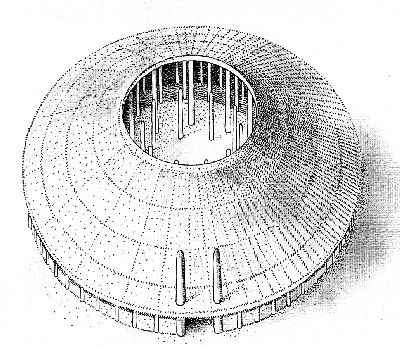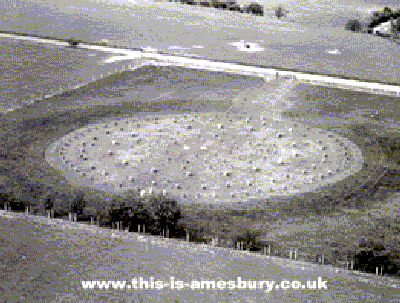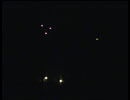Ancient Sites Such as Woodhenge Depict a Disk
by George Filer
During my four year Air Force tour in England I visited many prehistoric sites such as Stonehenge that could have been a landing place for disc shaped UFOs. A couple miles away is Woodhenge older than Stonehenge and was made from wood also in the shape of a disc.
Archaeologists claim the ancients worshipped the Sun or Moon, but these are balls not discs shaped. The timber circles were uncovered at Durrington Walls..., the site of a Stone Age village and prehistoric earthworks were discovered in the early summer of 1925 as Squadron Leader Insall sat at the controls of his Sopwith Snipe and noticed the recently ploughed remains of several disc barrows which had been almost obliterated by decades of farming.
One particular barrow in Dough Covert caught his eye as it appeared to resemble Stonehenge, visible two miles away. Woodhenge was made by skilled carpenters who lived 4000 years ago. It was 127 feet in diameter and contained 2750 yards of wooden framework that required ten acres of land. It was probably built prior to Stonehenge and may have been as a model for the stone monolith.
The Squadron Leader's subsequent aerial photography showed that there were indeed circles of holes or pits in the chalk. It consisted of an outer ditch and bank some 76 meter (250 feet) in diameter enclosing several concentric circles of holes, originally intended for timber posts long since disappeared. Unlike Stonehenge, there was no central alter stone. Further investigation showed that the monument, dated at 2300BC, was older than parts of the Stonehenge complex. For the want of a better name the investigators christened the new discovery 'Woodhenge', as this title seemed so appropriate it was adopted permanently.

Model of Woodhenge by Readers Digest

Aerial shot
Archaeologists found evidence that two timber circles once stood within Durrington Walls around 2500 B.C. At the south of the Durrington site, five concentric rings measuring 130 feet (40 meters) across and a smaller circle with two timber rings to the north. Mike Parker Pearson of the Stonehenge Riverside Project believes Durrington Walls and nearby Stonehenge were intimately connected represent the domains of the living and the dead, respectively. The shape of Woodhenge and Stonehenge are similar to flying discs. The standard thirty foot disc could have been able to land on the top of the structures.


